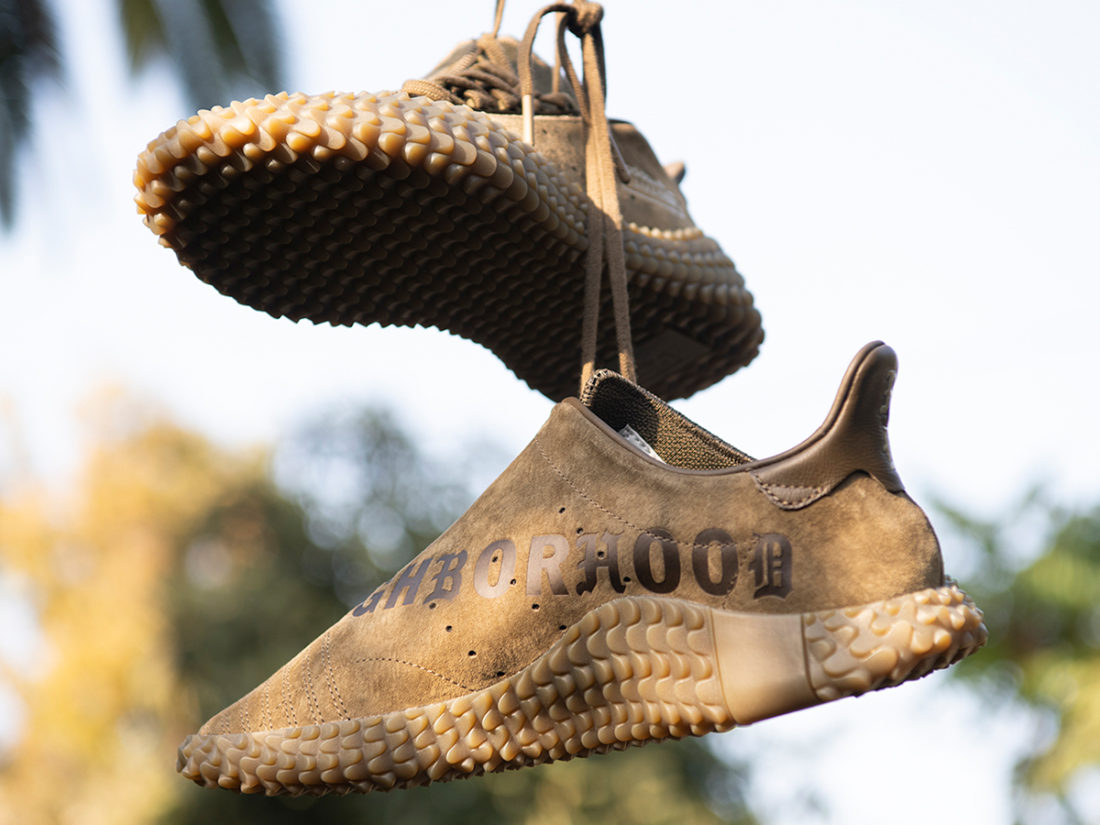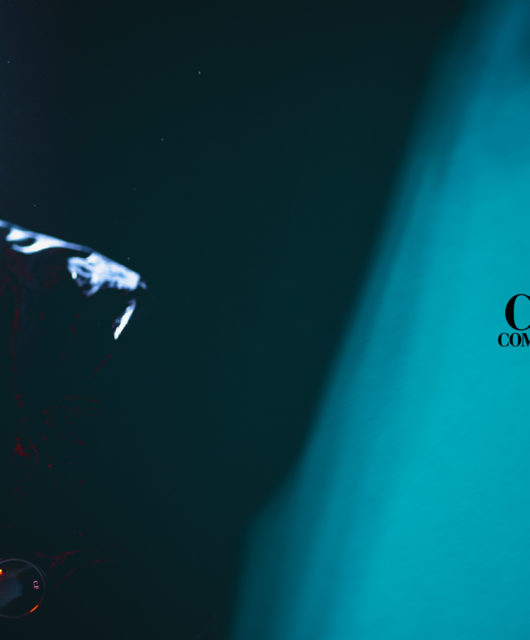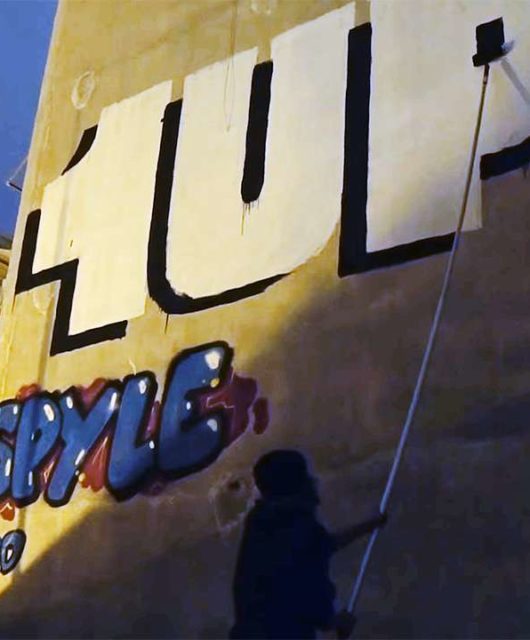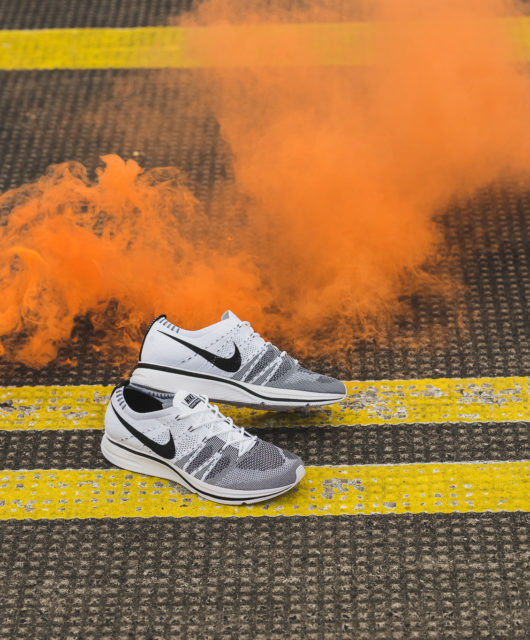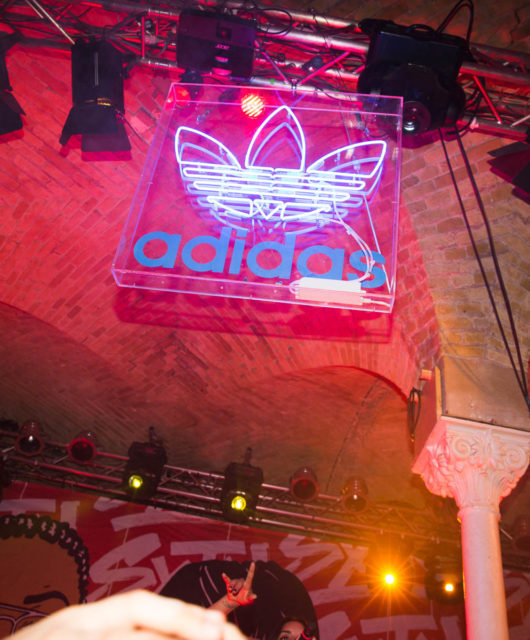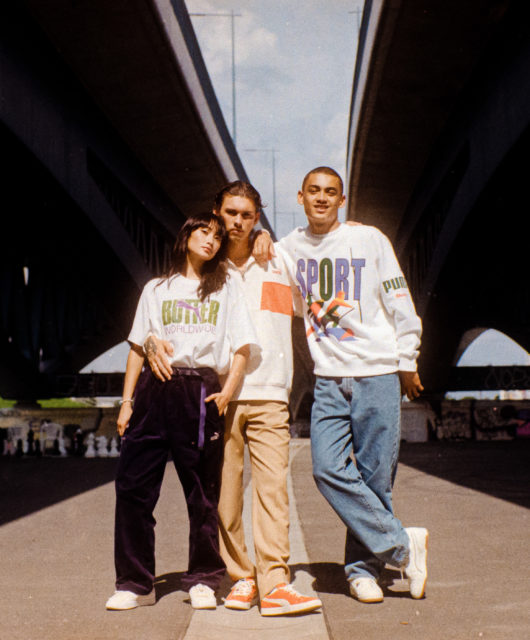Der adidas KAMANDA ist eine der spannendsten Silhouetten des Jahres 2018. Zusammen mit dem ebenfalls neu eingeführten adidas Sobakov bringt die Marke mit den drei Streifen vom Fußball inspirierte Schuhe in das Lifestyle-Segment. Gemäß einer scheinbar neuen adidas Strategie zur Promotion neuer Modelle, tauchte der KAMANDA bei Instagram erstmalig kurz vor Weihnachten 2017 auf. Das neue Modell sorgte schnell für Aufsehen im Netz über das alle großen Sneaker Blogs spekulierten. Um noch mehr Hype zu generieren, versorgte adidas einige wenige Influencer mit dem Schuh und hielt sich
gleichzeitig mit Informationen zu einem Releasetermin des KAMANDAs und dem Hintergrund des Schuhs zurück. Mittlerweile weiß man aber einiges zu seiner Story. Es heißt, Inspiration des KAMANDAs war ein Modell, das bei adidas nur als Sample existiert, aber nie produziert wurde. Dieser Schuh wiederum soll Designelemente des adidas Sambas haben, was sich auch im KAMANDA wiederfindet. Somit ist das futuristische Design des KAMANDAs eine Reminiszenz an die Vergangenheit. adidas erklärt, dass der Kamanda von der Einstellung und den Werten der Terrace-Kultur der 80er Jahre inspiriert ist. Die aus dem
britischen Fußball kommende Terrace-Bewegung hat ein großes Maß an Loyalität für die Community, die immer großen Wert auf ihren Status und ihre Individualität gelegt hat. Schon früh wollte man anders sein, man distanzierte sie sich von den Werten des Mainstreams. Das Design des KAMANDAs versucht diese Werte auf den Schuh zu übertragen und wenn man sich den Schuh so anschaut wird einem sofort klar, dass dieser Schuh kein Stück Mainstream ist und stark polarisiert.
Beim Material spielt adidas mit feinem Nubuk und Nylon in
qualitativ hochwertigen Regionen. Die drei Streifen sind nicht immer, aber oft, ähnlich wie beim Stan Smith durch Ventilationslöcher lediglich angedeutet. Auf dem Upper befindet sich seitlich ein goldenes adidas KAMANDA Branding. Der Shape ist unheimlich scharf, Zunge und Heeltab stehen so steil, dass man sich fast dran schneidet. Besonders Augenmerk erregt natürlich die Sohle. Die völlig neue Art der Sohle, die sich an Hacken und Ferse weiter nach oben zieht als eine gewöhnliche Sohle und einmal komplett um den Fuß herum verläuft, zeigt ein grobes Profil und ist lichtdurchlässig. Dieses Sohlenprofil hat Ähnlichkeit mit den Schuppen einer Schlange, wodurch ihm auf Instagram bereits der Spitzname “Rattlesnake”, also Klapperschlange verliehen wurde.
Im Overkill Shop haben wir zurzeit fünf verschiedene Versionen des KAMANDAs im Angebot. Die erneute Zusammenarbeitet zwischen adidas Consortium und dem Bostoner Sneakerstore Bodega hat einen KAMANDA mit einem einfarbigen schwarzen Upper aus Ballistic Nylon hervorgebracht. Anders als die meisten bisherigen KAMANDAS sehen wir hier die drei Streifen auf dem seitlichen Upper angebracht. Diese sind jedoch aus schwarzem Wildleder. Die gewebte Zunge ist oliv, das Heeltab ist khakifarbenes und das Lining ist orange. Durch die schwarze, halbdurchsichtige Sohle sieht man den Bodega Schriftzug in orange. Das einzige echte Bodega Branding sieht man auf dem rechten Zungenlabel, das in Consortium-Manier gestanzt ist. Die beiden KAMANDAS aus der Neighborhood Kollaboration sind aus hochwertigem Nubuk und haben ein schwarzes, bzw. olivfarbenes Upper. Über den Schuh verläuft schräg ein Neighborhood Schriftzug, der in diesem Fall vom kalifornischen Künstler und Designer Cali Thornhill DeWitt entworfen wurde. Auf dem Heeltab finden sich jeweils zwei Buchstaben der bekannten Neighborhood Abkürzung NBHD. Interessant ist auch das Lacing, das diesmal nicht wie sonst bei Schuhen angeordnet ist, sondern schräg außen auf dem Spann sitzt. Das goldene adidas KAMANDA Branding finden wir wie üblich hinten außen auf der Seite. Man muss sagen, beide Colorways sind spektakulär geworden. Der KAMANDA aus der Zusammenarbeit mit dem italienischen Modelabel C.P. Company featured ein Upper aus einem Military Green Nylon, auf dem die drei Streifen aus einem Tape-ähnlichen Material sind und mit dem C.P. Company üblichen Stitching aufgenäht sind. Das weiße Heeltab hat oben noch eine extra Lasche, vermutlich als Anziehhilfe nutzbar. Auf dem rechten Zungenlabel finden wir das C.P. Company Lettering. Der Inline KAMANDA 01 hat ein hellbeiges Upper aus Nubuk. Auch hier finden wir wieder die drei Streifen nur als Ventilationslöcher angedeutet. Die gewebte Zunge ist etwas dunkler als das Upper. Hinten auf der Seite prangt wieder das goldene adidas KAMANDA Logo. Die einzigartige Sohle ist bei dieser Version dunkler gehalten. Aber wie bei allen anderen beschriebenen KAMANDAS ist auch bei diesem Schuh der Shape ein Knaller.
Alle fünf hier ausführlich vorgestellten KAMANDAS sind in diversen Größen in unserem Store in Kreuzberg, sowie in unserem Onlinestore erhältlich.
Außerdem haben wir vor kurzem mit Chris Wheat, dem verantwortlichen Project Manager bei adidas für den KAMANDA über das Projekt, gesprochen. Dabei haben wir uns über die Entstehungsgeschichte des Schuhs und seine Wurzeln in der britischen Casual-Szene unterhalten, sind auf das polarisierende Design eingegangen und haben über bisherige Kollaborationen gesprochen. Um es inhaltlich nicht zu verfälschen haben wir uns entschlossen, es auf Englisch zu belassen. Viel Spaß.
Overkill: Hey Chris, thanks for taking time to answer a few questions about the KAMANDA.
Chris Wheat: No problem. First of all, I have to say that officially I am not a spokes person for the brand so all answers are my own opinion and don’t necessarily represent the brands perspective.
Ok: Since I have not really an idea of how a footwear company works, first thing I would like to ask about is what was created first, the idea for a new shoe like the KAMANDA or the design of the shoe?
CW: KAMANDA was generated from a number of different angles. I came into adidas to look after what is referred to as “˜Terrace’ This is a broad range of training and sports product that was re-appropriated by the football casual in UK and Europe in the late 70’s/80’s. This is so intrinsically adidas and an area we genuinely own so of course in the most respectful way, we wanted to start speaking a little louder about it.
Ok: What was the approach to a shoe project related to the terrace movement?
CW: With a heavily localized community and an aging fan base, we didn’t want this rich sub-culture to just fade away, so we set ourselves the challenge of trying to respectfully tell this story in a way that engaged a broader global consumer.
The originals direction was leaning towards modern & futuristic reinterpretations of shoes so again we knew that this would have to be something that fit into that world but without the hype and bullshit. In addition we recognized that the casuals values of individuality & exclusivity paired with community and a “˜tribe’ mindset are still present across within youth culture across the world which created an authentic connection point to the consumer.
So, we started with the consumer, which was us and our friends, our piers and our contemporaries and analyzed what made them tick. We then looked at the DNA of the product reference points and this became the first step in creating the brief. The shoe was designed from the brief and therefore was the designer’s interpretation of what we wanted to say. KAMANDA was not created to cater to the purists fans but more to allow today global consumer to learn about a hugely under communicated sub culture and re-interpret it in their own way. The values and product DNA are shared with Terrace Culture.
Ok: When looking at the shoe it’s quite obvious that the KAMANDA is polarizing. Do you have an idea if or how the KAMANDA was accepted by the people of that terrace movement?
KAMANDA is a polarizing shoe and we set out to achieve that. It had to be provocative and progressive to differentiate it from the archival shoes and also to gain traction with a broader consumer base. I think the Terrace community is split. A lot of the purists would not wear it which is cool but I hope that they can at least see that we tried to be respectful in every aspect of the approach as not to water down what I consider to be one of the most rich sub cultural movements of that era. Overall the shoe has been extremely well received and gone far beyond our expectations.
Ok: Sounds really good. Let’s talk about collaborating with other brands. We have seen collabs with C.P. Company, Neighborhood and Bodega, do you have a favourite KAMANDA collaboration so far?
The collabs we’re set up to back up the reference points that we used in the original brief.
C.P. is a terrace mainstay and a desire of both brands to authentically talk to a new wave of consumer lead us very naturally into this project.
Neighborhood & Shin Takasawa are true OG’s and were a major contributing factor in Japan’s influence in streetwear, but fundamentally Neighborhood’s ethos has similarities to the casuals approach to fashion. Bodega is very much the same, a grassroots, community based store representing both East and West coast US with integrity and authenticity.
All partners represent subculture and community in their own right and therefore fit the profile of what we defined as the modern casual.
I have no favorite as all partners brought something different, CP pushed the boundaries with the fabric, Bodega brought a new blocking and Neighborhood an iterated upper.
Ok: Besides the upcoming Dragonball Z KAMANDA, what other KAMANDA projects/ collabos can we expect in the future? Can you reveal anything?
Moving forward we will respect KAMANDA and keep distribution tight, numbers responsible but not unavailable and executions that bring legit story telling. There may or may not be future partners on the shoe, but if we do, it just needs to happen organically and be the right partnerships.
Ok: That was a lot of interesting stuff you were talking about. Thanks for giving us such a deep insight into what the KAMANDA is about and where it comes from. Thanks a lot, Chris.
Text: Ernie Beckmann

